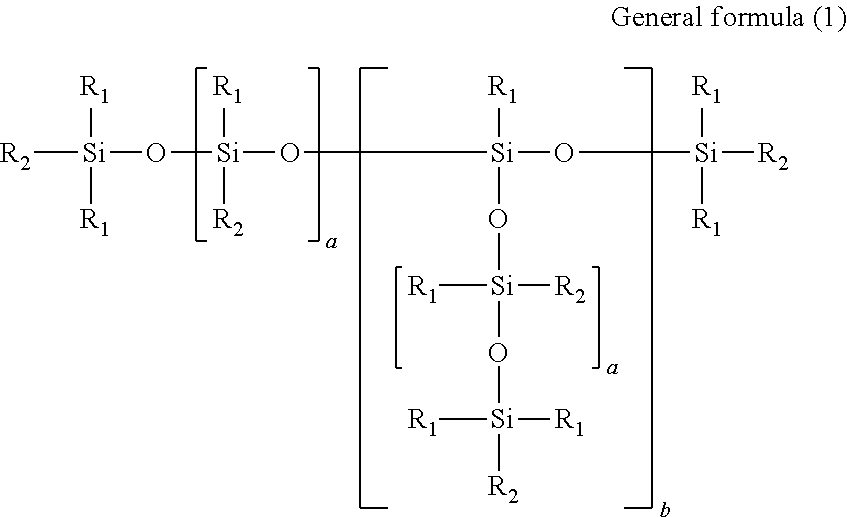Aqueous ink composition
- Summary
- Abstract
- Description
- Claims
- Application Information
AI Technical Summary
Benefits of technology
Problems solved by technology
Method used
Image
Examples
example 1
[0152]Twenty parts of the cyan aqueous pigment dispersion 1, 13 parts of JONCRYL 538 as a binder resin, 5 parts of 1,2-propanediol, 5 parts of 2-methyl-1,3-propanediol and 57 parts of water were each weighed. These components were transferred sequentially to a mixing container while stirring was performed with a Disper, and thorough stirring was continued until a uniform mixture was obtained. Subsequently, the resulting mixture was filtered through a membrane filter to remove the types of coarse particles that can cause head blockages, thus obtaining an aqueous ink composition. The viscosity of this aqueous ink composition was 5 mPa·s.
examples 2 to 64
, Comparative Examples 1 to 14
[0153]Using the formulations of pigment dispersions, binder resins, solvents and surfactants shown in Table 2 to 5, aqueous ink compositions were prepared using the same method as that described for Example 1. Each of the obtained aqueous ink compositions was evaluated. In the preparation of each aqueous ink composition, the amounts added of the binder resin and water were adjusted so that the viscosity of the aqueous ink composition was 5 mPa·s.
[0154]Abbreviations used in Tables 2 to 5 are as follows.
(Pigment Dispersions)
[0155]Cyan 1: corresponds with the previously prepared cyan pigment dispersion 1. Similar abbreviations correspond with each of the other prepared pigment dispersions.
(Binder Resins)
[0156]A: resin microparticles “JONCRYL 538”: a styrene / acrylic resin emulsion manufactured by BASF Japan Ltd., glass transition temperature (Tg): 64° C., solid fraction: 46%, and weight average molecular weight: at least 200,000.
[0157]B: a water-soluble res...
PUM
| Property | Measurement | Unit |
|---|---|---|
| Temperature | aaaaa | aaaaa |
| Temperature | aaaaa | aaaaa |
| Percent by mass | aaaaa | aaaaa |
Abstract
Description
Claims
Application Information
 Login to View More
Login to View More - R&D
- Intellectual Property
- Life Sciences
- Materials
- Tech Scout
- Unparalleled Data Quality
- Higher Quality Content
- 60% Fewer Hallucinations
Browse by: Latest US Patents, China's latest patents, Technical Efficacy Thesaurus, Application Domain, Technology Topic, Popular Technical Reports.
© 2025 PatSnap. All rights reserved.Legal|Privacy policy|Modern Slavery Act Transparency Statement|Sitemap|About US| Contact US: help@patsnap.com



